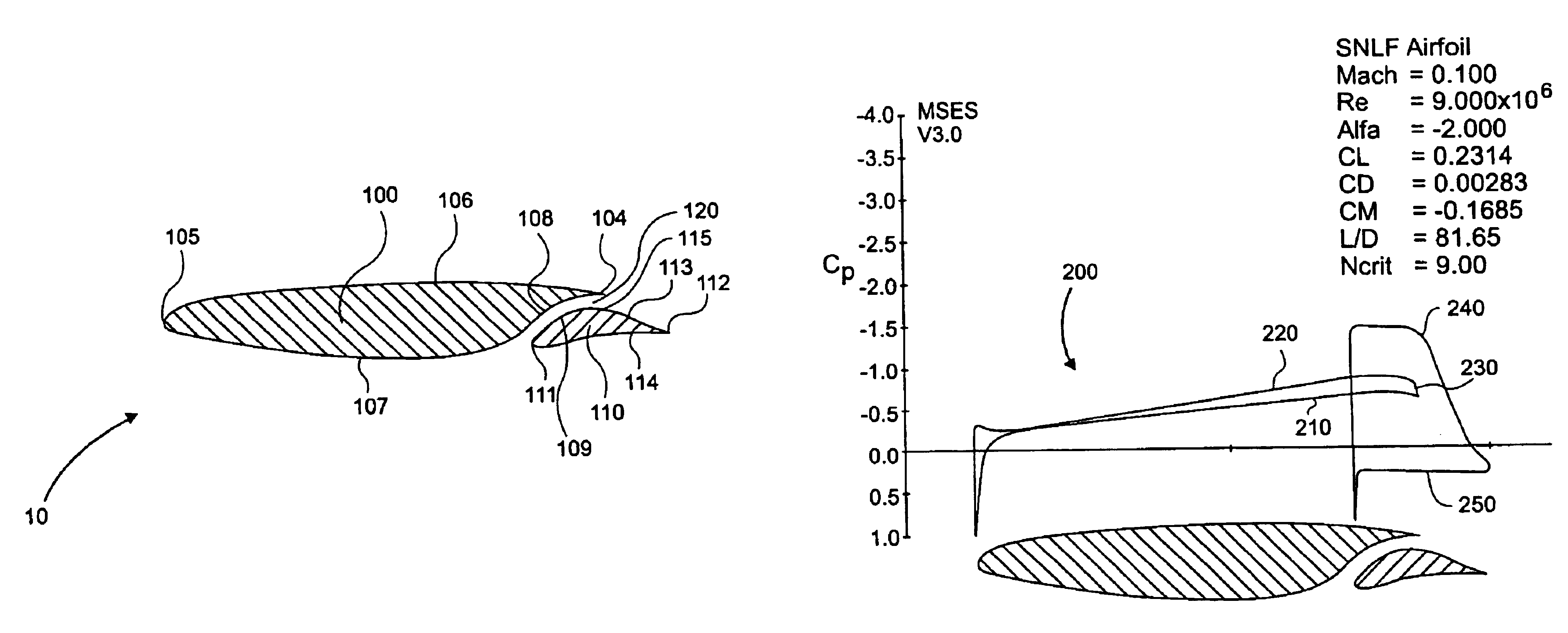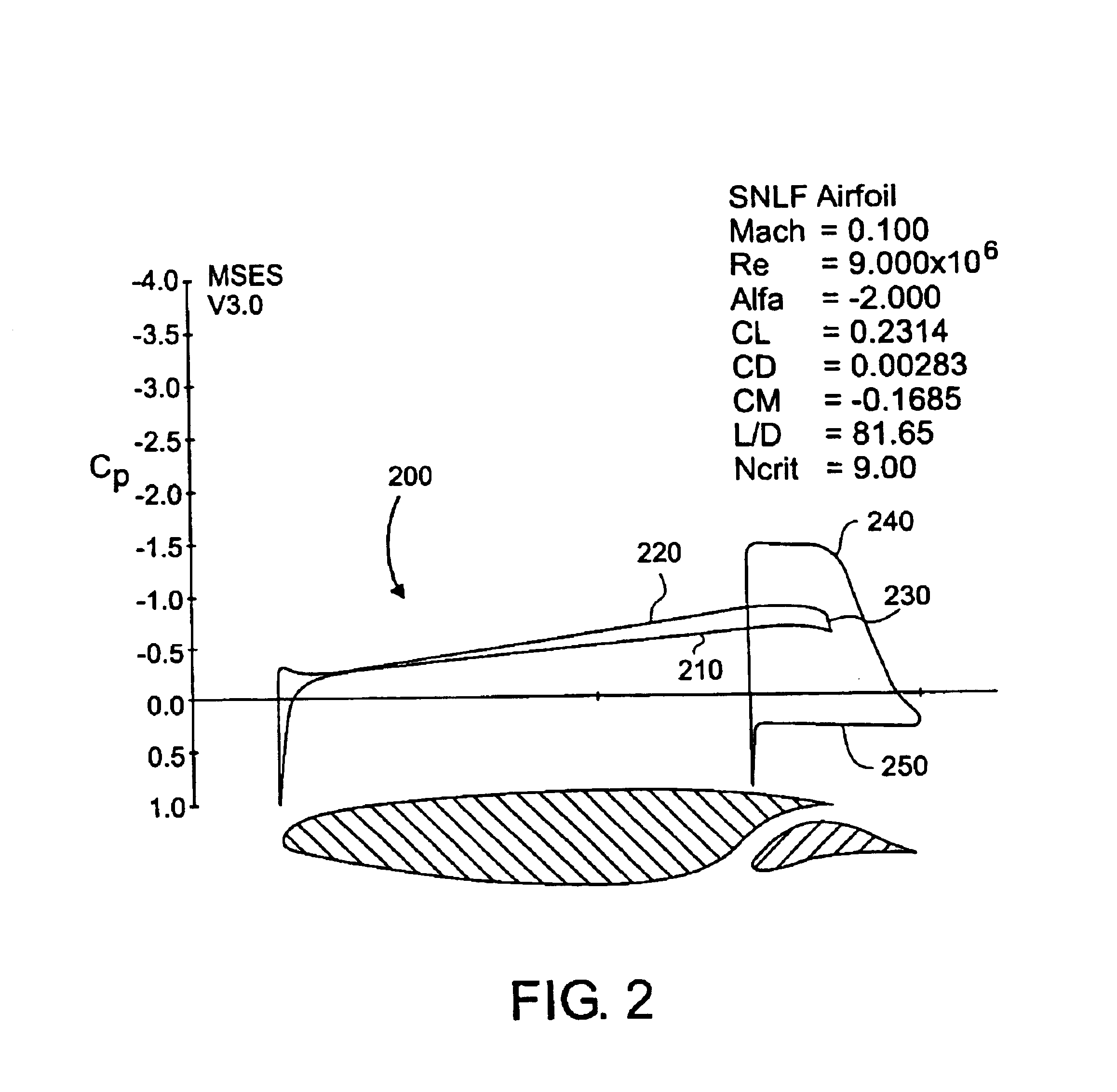Laminar-flow airfoil
a technology of airfoil and laminar flow, applied in the field of laminar flow airfoil, can solve the problems of unfavorable low-profile drag, unacceptably low maximum lift coefficient, and higher weight and cos
- Summary
- Abstract
- Description
- Claims
- Application Information
AI Technical Summary
Benefits of technology
Problems solved by technology
Method used
Image
Examples
Embodiment Construction
[0014]Reference will now be made to an embodiment of the invention, an example of which is illustrated in the accompanying drawings
[0015]In accordance with the invention, there is provided an airfoil that includes a fore airfoil element. As here embodied, and depicted in FIG. 1, fore airfoil element 100 has an upper surface 106, a lower surface 107, a leading edge 105 and a trailing edge 104. Leading edge 105 provides a first contact between fore airfoil element 100 and the air surrounding the airfoil assembly 10. While the fore element of the airfoil depicted in FIG. 1 has a specific configuration, it is not the only airfoil configuration operable with the present invention. As will be set out below, rather than the invention being specific airfoil shapes, it is the interaction of the fore and aft elements of the airfoil, and their effect on the flow over and through the combined elements that provides the benefits of the invention. With the flow characteristics and pressure distri...
PUM
 Login to View More
Login to View More Abstract
Description
Claims
Application Information
 Login to View More
Login to View More - R&D
- Intellectual Property
- Life Sciences
- Materials
- Tech Scout
- Unparalleled Data Quality
- Higher Quality Content
- 60% Fewer Hallucinations
Browse by: Latest US Patents, China's latest patents, Technical Efficacy Thesaurus, Application Domain, Technology Topic, Popular Technical Reports.
© 2025 PatSnap. All rights reserved.Legal|Privacy policy|Modern Slavery Act Transparency Statement|Sitemap|About US| Contact US: help@patsnap.com



